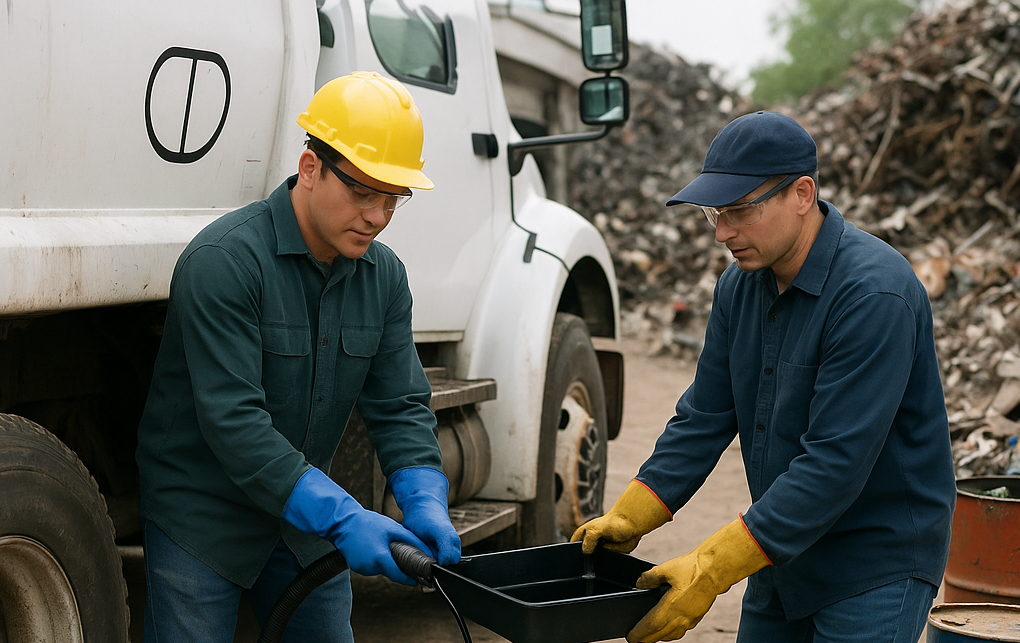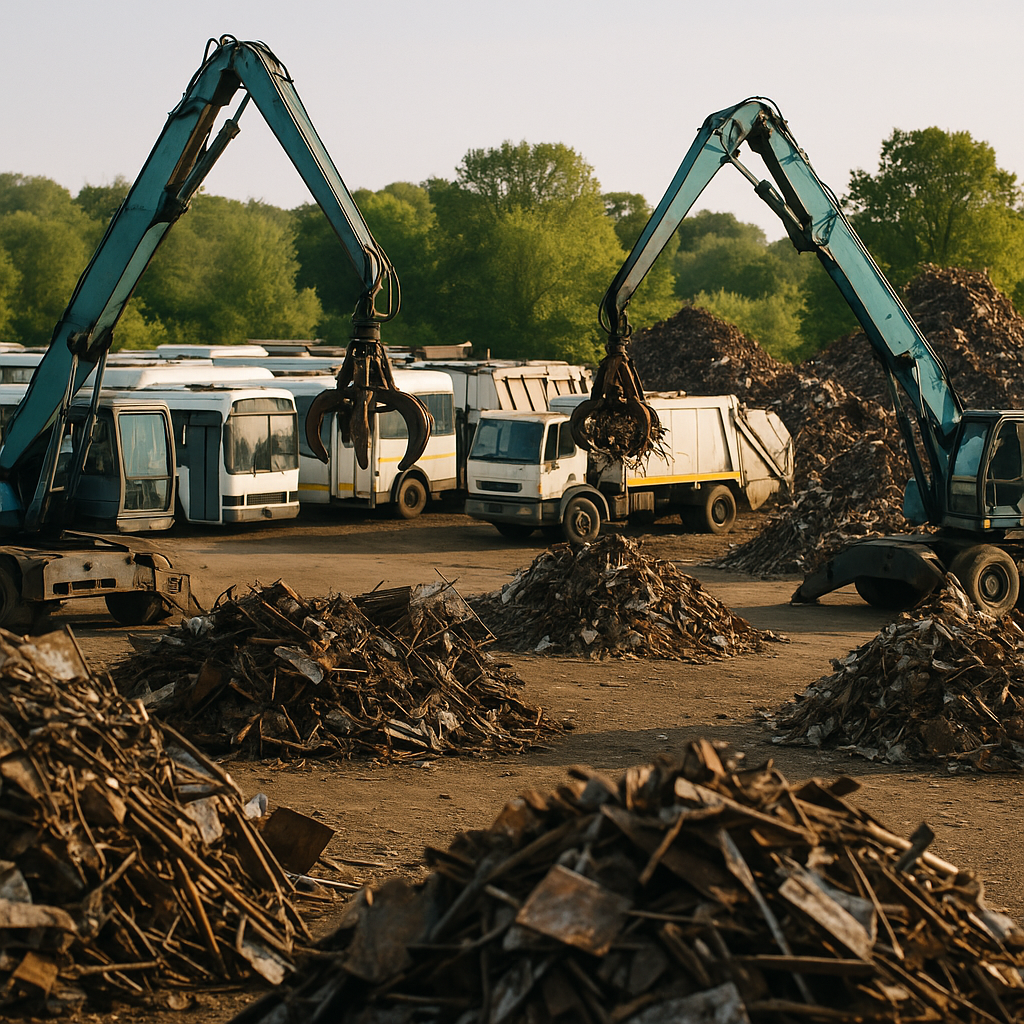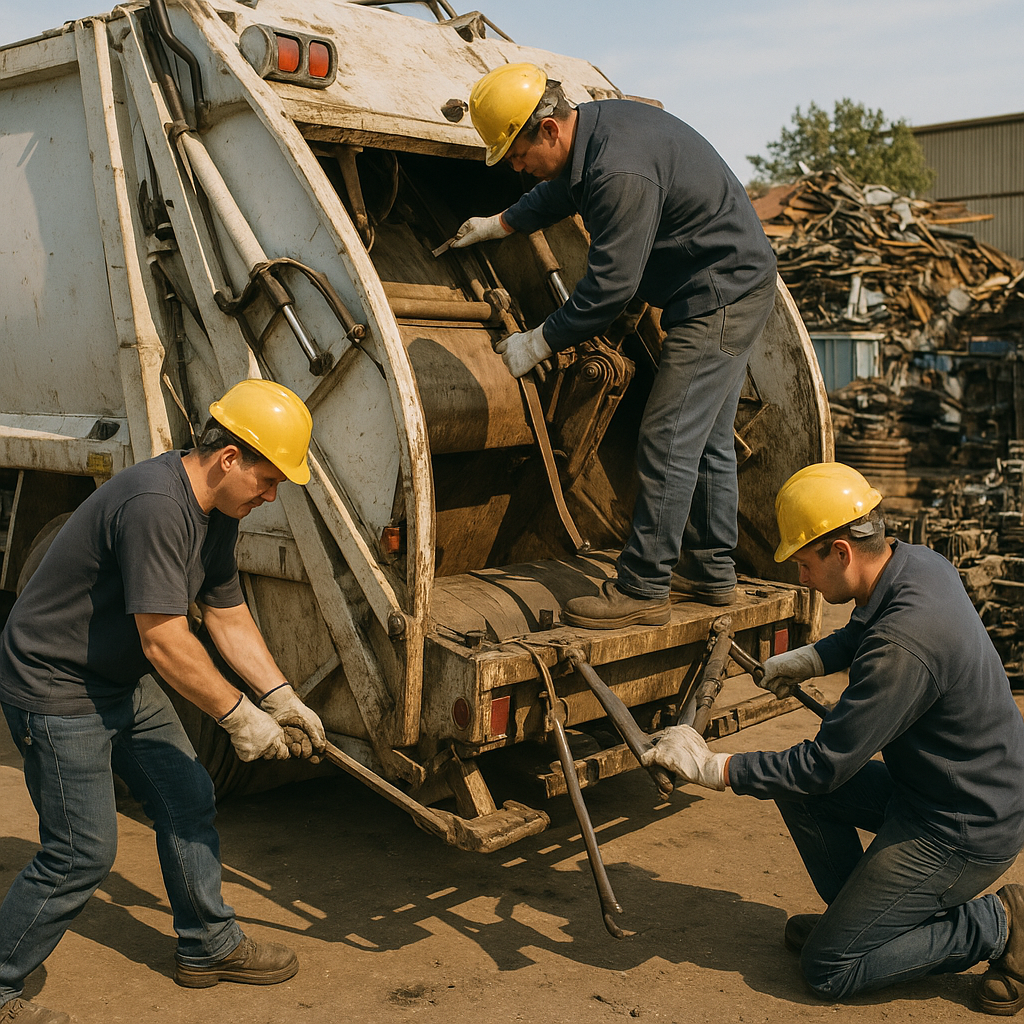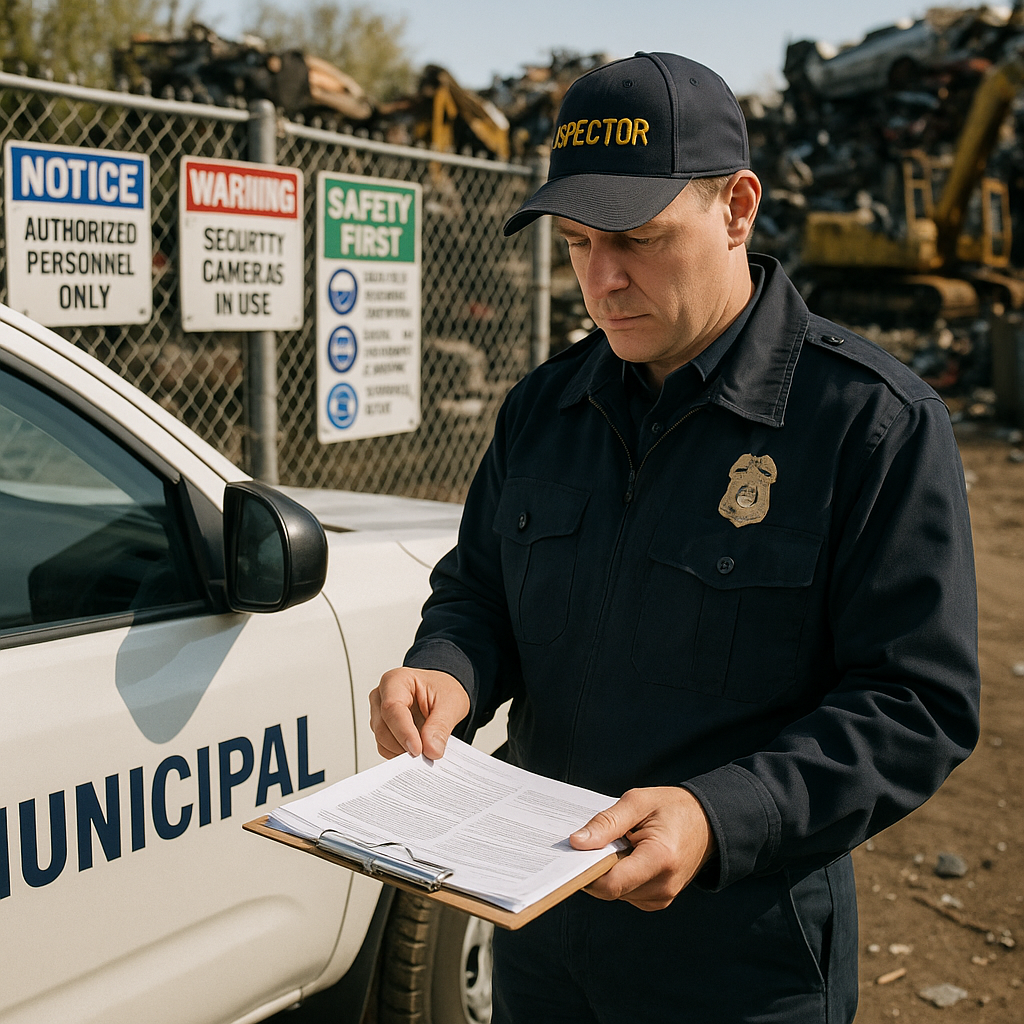5901 Botham Jean Blvd, Dallas, TX 75215
Discover the Process for Scrapping Large Municipal Vehicles
July 30, 2025The end of life for a municipal titan is a sight to behold. Massive fire trucks and city buses that once thundered through streets now lie silent as industrial crushers compress decades of service into compact metal cubes. This is the realm of municipal vehicle scrapping.
Scrapping large municipal vehicles involves a structured process beginning with official decommissioning. City councils or municipal fleet managers issue formal orders to retire vehicles that have reached the end of their operational life. These decisions often follow strict replacement schedules or occur when repair costs exceed the vehicle’s remaining value.
Once decommissioned, these municipal giants make their final journey to specialized recycling facilities. These aren’t typical scrap yards; they’re equipped with heavy machinery designed specifically to handle vehicles weighing several tons. Excavators with specialized attachments, industrial cranes, and hydraulic crushers are ready to dismantle these once-essential public service vehicles.
What Happens to Fluids, Electronics, and Hazardous Components?

Before a municipal vehicle can be scrapped safely, all fluids and hazardous components must be systematically removed and managed in compliance with environmental regulations. This includes motor oil, coolant, transmission fluids, brake fluids, and air conditioning refrigerants.
Specialized technicians extract these substances to prevent contamination of soil and groundwater. Next, batteries are removed and sent to certified recycling facilities, where valuable metals like lead and lithium are recovered. Electronics, such as onboard computers, GPS systems, and communication devices, are carefully separated for reuse or proper recycling through e-waste channels.
Mercury switches, airbags, and other components classified as hazardous are isolated and handled according to EPA guidelines to avoid toxic releases. This comprehensive approach ensures that each part of the municipal vehicle is either responsibly recycled or safely disposed of, minimizing risks to public health and the environment.
The Economic and Environmental Impact of Municipal Vehicle Scrapping
Economic Benefits for Cities and Local Businesses
Scrapping municipal vehicles provides valuable economic benefits to city governments and local businesses. When large fire trucks, buses, or garbage trucks are recycled, cities can often recover significant value from the sale of scrap metals like steel, aluminum, and copper. These revenues help offset the cost of new fleet purchases or maintenance of existing vehicles.
Additionally, local recycling centers and scrap yards benefit from a steady supply of high-value materials, supporting jobs and boosting the regional economy.
Reducing Environmental Footprint Through Responsible Recycling
From an environmental standpoint, municipal vehicle scrapping plays a crucial role in decreasing the carbon footprint of urban transportation fleets. Recycling steel saves up to 74% of the energy required to produce new steel from raw materials (Steel Recycling Institute, 2024).
Proper recycling prevents hazardous materials from entering landfills, conserves natural resources, and aligns with city sustainability goals. Ultimately, responsible scrapping supports the circular economy by reintroducing valuable metals and components into new manufacturing cycles, reducing the need for new material extraction and minimizing overall waste.
The Process for Scrapping Large Municipal Vehicles

Here’s a breakdown of the scrapping process for large municipal vehicles.
Decommissioning and Site Preparation
The scrapping process begins with the formal decommissioning of the municipal vehicle. Fleet managers ensure all legal requirements are met, including removing license plates, canceling insurance, and updating fleet records.
Once officially retired, the vehicle is transported to a licensed recycling facility equipped for heavy-duty dismantling. The site is prepared to handle potential leaks and safely accommodate oversized vehicles, with spill kits and containment systems in place.
Dismantling and Material Separation
At the recycling facility, specialized crews methodically dismantle the vehicle. Large components—such as engines, transmissions, axles, and drive trains—are first removed using heavy equipment.
Smaller parts, including doors, seats, and wiring, are separated by hand or with cutting tools. The goal is to isolate valuable, recyclable materials while minimizing waste.
During this stage, any remaining fluids or hazardous substances are drained and properly processed. Components containing precious metals, such as catalytic converters and electronic modules, are set aside for specialty recycling.
Crushing, Shredding, and Final Processing
Once stripped, the vehicle’s shell is fed into industrial crushers or shredders capable of handling several tons of material. This machinery compresses the body into manageable fragments or cubes, maximizing storage and transport efficiency.
Powerful magnets and mechanical separators sort ferrous and non-ferrous metals from non-metallic materials like rubber and plastics. The resulting scrap metal is bundled and sent to foundries or steel mills for smelting and reuse.
Any residual materials are processed for proper disposal or further recycling, ensuring minimal environmental impact and maximum resource recovery.
What Regulations Govern the Scrapping of Municipal Vehicles?

The scrapping of municipal vehicles is subject to stringent federal oversight. The National Motor Vehicle Title Information System (NMVTIS) plays a crucial role in regulating this process. Scrap metal processors must follow specific guidelines to prevent fraud and protect consumers.
Scrap yards are required to verify that vehicles have no outstanding liens before purchasing them. This verification step helps prevent the illegal disposal of vehicles with existing financial obligations. It ensures legitimate lienholders are not deprived of their collateral without proper compensation.
Record-keeping is essential for compliance in this industry. Processors must maintain detailed electronic records that include:
- The name, address, and contact information of the reporting entity
- The vehicle identification number (VIN)
- The date the vehicle was obtained
- The name of the individual or entity from whom the vehicle was obtained
- Details about the vehicle’s disposition (e.g., crushed, sold, exported)
These records must also include photographic evidence of the vehicles processed. This documentation serves as proof of compliance and provides a trail for law enforcement if questions arise about a vehicle’s fate.
There are stringent regulations on payment methods for scrapped vehicles. These rules aim to enhance transparency and reduce illegal activities in the vehicle recycling chain. Many jurisdictions restrict cash payments, requiring checks or electronic transfers instead, to create a clearer audit trail.
The NMVTIS reporting timeline is particularly strict. Scrap processors must report vehicle information to NMVTIS within two business days of acquisition. This rapid reporting helps prevent VIN cloning and other types of vehicle-related fraud.
Certain exemptions exist. Entities handling fewer than five vehicles annually that qualify as salvage, junk, or total loss might not need to report. Similarly, scrap processors receiving vehicles from sources that have already reported to NMVTIS may be exempt from duplicate reporting.
Penalties for non-compliance can be severe, potentially leading to substantial fines. In cases of deliberate fraud or repeated violations, responsible parties may face criminal charges. These strict consequences illustrate the importance the federal government places on proper vehicle disposal tracking.
Scrap metal processors cannot use ignorance as a defense. The Department of Justice expects all entities in the vehicle recycling chain to be aware of and follow these regulations. Regular audits ensure compliance throughout the industry.
Conclusion: The Future of Municipal Vehicle Recycling

As cities modernize their fleets, the responsible scrapping of large municipal vehicles remains a key part of sustainable urban development. Proper recycling of these assets not only ensures compliance with environmental regulations but also recovers valuable materials that can be reintroduced into the manufacturing cycle. This circular approach to resource management is essential as municipalities move towards more sustainable practices.
The future of municipal vehicle recycling looks promising with advancing technologies and growing awareness of proper end-of-life vehicle management. By adhering to regulations, using specialized recycling equipment, and prioritizing environmental considerations, cities can maximize the recovery of metals, components, and other materials while minimizing waste. Although the process is complex, the environmental and economic benefits make it a worthwhile investment in our shared future. For expert assistance with municipal vehicle recycling, contact Okon Recycling at 214-717-4083.
